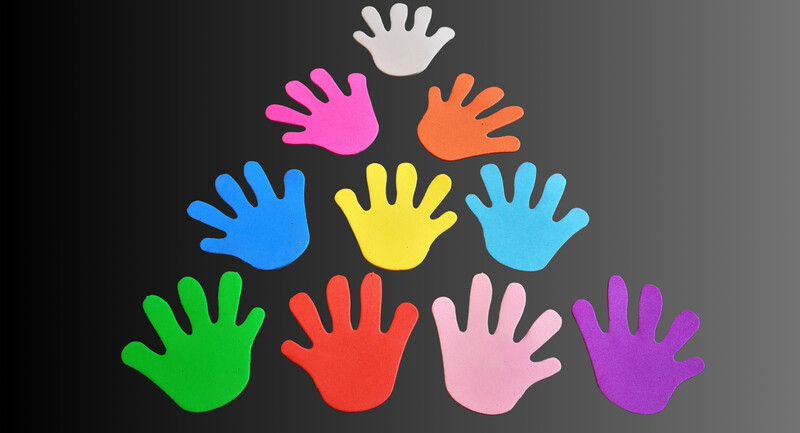“These families,” “the self-contained kids,” “the ELLs,” “mom is a hot mess,” “he can’t sit still”—We’ve all heard children and caregivers spoken about in these ways. Perhaps we have used these phrases ourselves—not because we wanted to cause harm, but because we didn’t consider the impact of our language.
Imagine receiving a new roster of students and having already heard about “that family” or knowing the reputation of a student as a “behavior kid.” No matter your best intentions as an educator, you will inevitably approach families and students with preconceived notions—and those notions might be harmful or alienating. Seemingly mundane ways of qualifying and classifying caregivers and students through language impact our decision-making and our actions. Our words matter.
When we use phrases like “these families,” we create distance or dehumanize the families we are referring to, emphasizing “otherness” and making them, the families, seem like a separate entity from us, the school community. Not only does our language separate or “other,” it also implies a family is not as good or not as welcome in our community.
Similarly, when we refer to students by a school service delivery model, such as “self-contained” or “ELL,” we erase the complexity of their identities and limit our representation of them to one (often stigmatized) marker of who they are. Microaggressions like deficit labeling and sweeping generalizations can alienate and exclude the very students and families who are supposed to be members of our learning communities.
How Words Shape Lives
Our schools are filled with conversations with children and their families, and about children and their families. Language helps us categorize and classify the world around us to make sense of it, and language carries assumptions and valuations, both negative and positive, that our students and their families feel as they navigate the world of school.
“Your child won’t stop talking,” Nawal heard a teacher say during a recent parent teacher conference. “He’s distracting everyone else because he can’t keep his mouth shut.”
Nawal watched the caregiver visibly deflate. Not knowing how to respond to the teacher, the caregiver said, “I’ll talk to him,” then later told Nawal that she wondered if her child was bored or potentially singled out.
“I just wish I knew what was happening in the classroom with the other kids. Don’t they all talk? How much is too much? Should they be silent? Is he challenged enough? I just don’t understand.”
Microaggressions can alienate and exclude the very students and families who are supposed to be members of our learning communities.
During a recent circle share in Sarah’s teacher education class, the teaching residents were reflecting on the general malaise of standardized testing season. One student shared that her school had split the children into low, medium, and high test-prep groups. “You can see the students in the ‘low’ group just fully disengaging, and I don’t blame them.”
Vignettes like these are reminders that our words make an impact—and a more loving and compassionate language is required when communicating with students and caregivers. This remains true whether we are face-to-face with them or talking about them when they are not present.
Reframing Our Language
In our work as teacher educators, in districts across the country, in schools large and small, we, Nawal and Sarah, have encountered both harmful and positively framed language about children and their families. We wrote this piece because we have encountered so many similar pitfalls—and similar solutions—when it comes to considering the impact of words.
Given the complexity of this work, the vulnerability it requires, and the significant impact of our daily language, we offer a few practical and approachable actions you could take to reframe your language:
1. List all your shorthand categories and labels for students and their caregivers. Consider your intent in contrast with the potential impact of your language. What words can you change or eliminate to communicate your positive regard for your school community members? For example, if you usually refer to “the self-contained kids,” consider how that categorization dismisses their disability identity and instead centers on their service delivery model placement as the marker of their identity. Consider how identifying students by a service delivery model might feel dehumanizing to the students who receive special education services in self-contained classrooms. Instead of “the self-contained kids,” could you instead use human-first language like “the students who receive special education services in self-contained classrooms” or if that’s too long, “the students in room xxxx”?
2. Offer caregivers questions they might ask of you and your colleagues to diversify the types of questions they can ask teachers about their children. This will make them feel more knowledgeable and empowered. Questions might include:
- How does my child learn best?
- What inspires wonder and awe in my child?
- What topics is my child interested in learning about?
- What opportunities are available for my child to use their full repertoire of language skills in reading and writing? Where is translanguaging encouraged?
- What kind of reflection does my child engage in?
- Does my child know you know these details about them?
These questions are useful for caregivers to ask during family conferences, so we have found that sharing them with parents early in the school year supports more loving and thoughtful conversations.
3. Bring your questions about language to the people in your life that you know you can be vulnerable and honest with. Cultivate places with like-minded individuals who you know won’t rush to find a quick fix but will rather spend time deeply listening. Allow your community to be your sounding board as you seek deeper understanding of your own language.
Nawal and Sarah, for example, rely on each other to try out language that might feel murky or charged, uncomfortable or confusing. They think together about how to not inadvertently alienate kids and families. Nawal might ask Sarah: I have a student who is struggling to emotionally regulate himself. I want to say he’s out of control in the classroom, but that might send the wrong message. What’s a better way? Through mutual respect and a dedication to honesty, we feel comfortable making mistakes in front of each other, too.
What words can you change or eliminate to communicate positive regard for your school community members?
A Note on School Culture
School culture can be difficult to shift, particularly when systems and structures are set around grouping and classifying children by testing data. In these instances, it’s important to think about what is in the locus of our control. As classroom and school-based educators, we can shift the ways we talk about children and their families—not only in the in-between spaces of hallway talk or teacher’s lounge talk, but also in the more formalized caregiver conference moments.
In order to shift our language, it is imperative that we work to speak from an unconditional positive framing of families and children. Foregrounding positively framed language requires that we slow down and remind ourselves that we are talking about children and families in all of their humanity. It means asking questions and approaching our students and their caregivers with thoughtful curiosity rather than established, uninterrogated beliefs about their lived experiences and capacities.
Let’s Communicate with Care
While we can’t live our lives crafting each sentence with extreme deliberation, we must recognize that even casual conversations impact the ways we construct our understandings of caregivers and children, which in turn impacts the ways we support, communicate with, and serve our communities. Through repeated practice and raising awareness about the ways we speak, we can get better about treating people like individuals and not like categories. Building a reflective practice around our language choices and being intentional with our words can be instrumental in communicating the care, respect and love we have for our students and their caregivers.
Nawal Qarooni is an educator, staff developer, and adjunct professor who supports a holistic literacy model of instruction in schools. She and her team of coaches at NQC Literacy work alongside teachers and school leaders to grow a love of reading and composition in ways that exalt the whole child, their cultural capital, and their intrinsic curiosities. She is the author of Nourishing Caregiver Collaborations: Exalting Home Experiences and Classroom Practices for Collective Care (Routledge 2023).
Learn more about her work at nqcliteracy.organd follow her at @NQCLiteracy on X or @nqarooni on IG and Threads.








